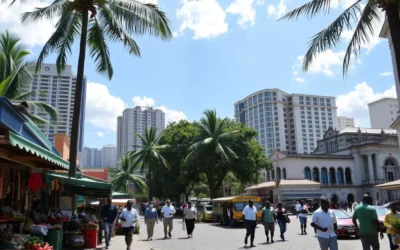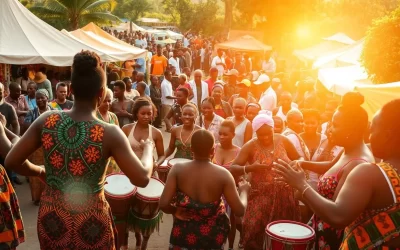✓ Accommodations✓ Flights✓ Rental Cars
Liberia is a country rich in cultural and linguistic diversity. English serves as the official language, playing a vital role in government, education, and communication. This makes it a unifying force in a nation where over 20 indigenous languages are spoken.
While English is the primary language, indigenous tongues like Kpelle, Bassa, and Vai add depth to the cultural tapestry. For example, the Bassa language is spoken by about 350,000 people, while Vai has around 104,000 speakers. These languages reflect the diverse heritage of the region.
Liberian English, a unique variant, blends standard English with local expressions. This creole form is widely understood and used in everyday interactions. Understanding this linguistic landscape offers insight into the nation’s identity and traditions.
Overview of Liberia’s Linguistic Heritage
The linguistic landscape of this West African nation is shaped by centuries of migration and cultural exchange. Over time, diverse groups have contributed to the rich tapestry of communication. This evolution reflects the deep historical roots of the region.
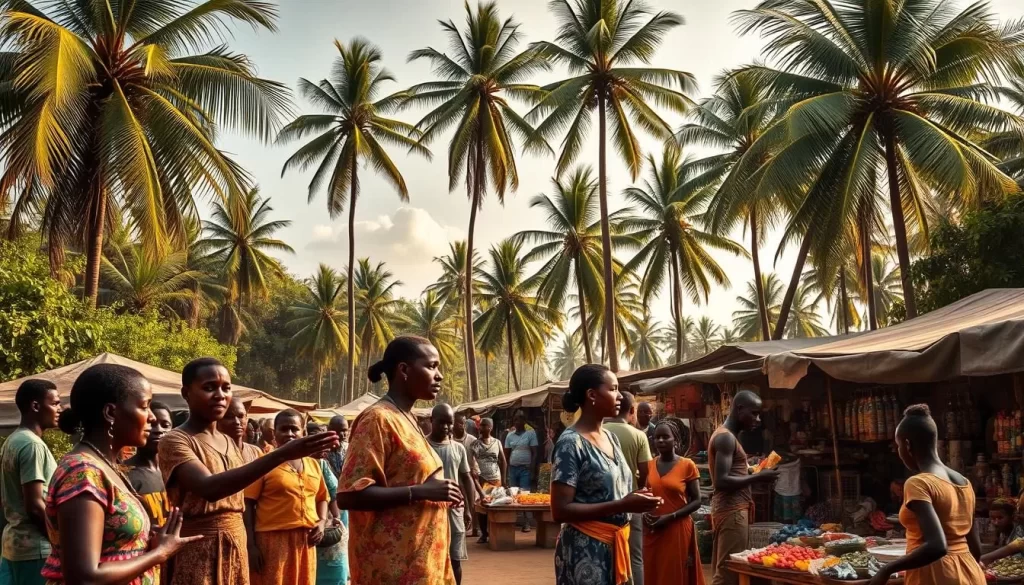
Historical Context and Migration Impacts
Migration patterns have played a significant role in shaping the way people communicate here. For example, the arrival of Americo-Liberian settlers in the 19th century introduced new linguistic influences. This contact between different groups led to the blending of languages and the creation of unique dialects.
Indigenous populations also preserved their traditional tongues, adding depth to the linguistic heritage. Over 95% of the population still speaks these native languages today. This balance between old and new forms of communication highlights the region’s adaptability.
Evolution of Language in a Multilingual Society
As the country evolved, so did its languages. The interaction between various groups resulted in distinct dialects across different regions. For instance, Liberian Kreyol emerged as a widely understood form of communication, with around 3 million speakers.
This multilingual society continues to thrive, with each century adding new layers to its linguistic identity. Understanding this evolution offers insight into the nation’s cultural resilience and diversity.
Liberia: Official and widely spoken languages
Communication in this West African nation is shaped by its unique blend of formal and informal language forms. Standard Liberian English serves as the formal medium, used in education, government, and media. It retains archaic American expressions while integrating British and local linguistic elements.
In everyday interactions, many people rely on pidgin english and creole variants. These informal forms bridge diverse communities, making communication accessible and relatable. For example, Kru Pidgin English originated among maritime communities in the 18th century and remains widely used today.
English as the Official Language and Lingua Franca
Standard Liberian English is the backbone of formal communication. It reflects the nation’s historical ties to the Americas and Britain. This variant is essential for official purposes, ensuring clarity and consistency across regions.
However, the way english spoken varies depending on the context. In urban areas, you’ll hear a mix of formal and informal expressions. Rural communities often lean more toward traditional dialects, blending English with indigenous influences.
Pidgin English and Creole Variants in Daily Use
Informal communication thrives through pidgin english and creole variants. Liberian Kreyol, for instance, blends West African Pidgin with Caribbean English influences. It’s spoken by a majority of the population, making it a vital part of daily life.
Here’s a quick comparison of key language forms:
| Language Form | Usage | Origin |
|---|---|---|
| Standard Liberian English | Formal settings | American and British influences |
| Kru Pidgin English | Maritime communities | 18th-century Kru fishermen |
| Liberian Kreyol | Everyday communication | West African Pidgin and Caribbean English |
These language forms highlight the adaptability of spoken liberia. They ensure that communication remains inclusive, bridging gaps between formal and informal settings.
Exploring Indigenous Language Families in Liberia
Indigenous languages here are grouped into distinct families, reflecting deep heritage. These families include Mande, Kru, Mel, and Gola, each with unique characteristics. This classification helps us understand the region’s rich linguistic diversity.
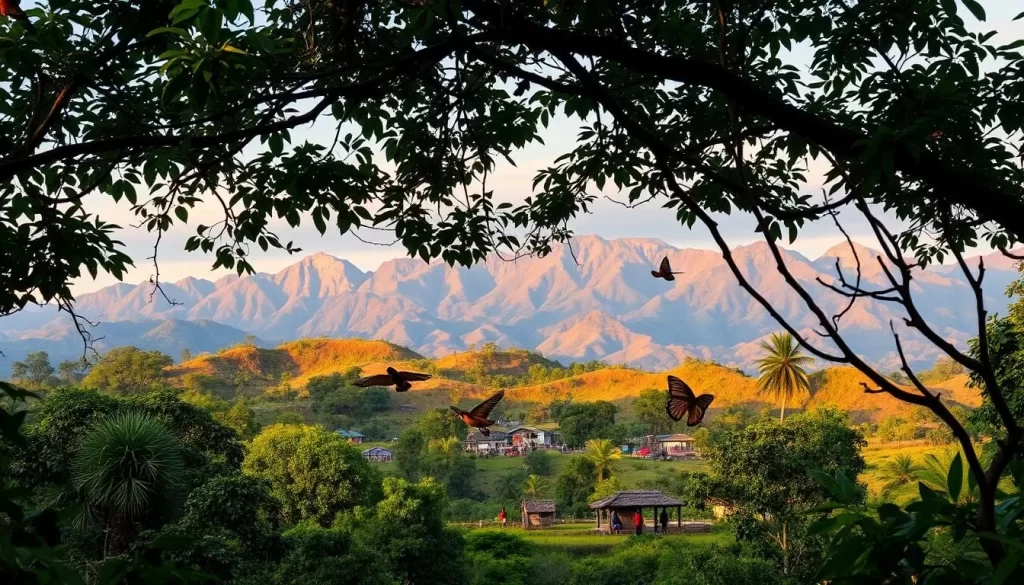
Mande, Kru, Mel, and Gola: A Closer Look
The Mande language family includes tongues like Kpelle and Loma, spoken in the northwestern region. These languages are part of the larger niger-congo language family, which dominates the region.
The Kru language family features dialects like Kru and Gola, primarily used in the southeastern coastal areas. These languages are known for their distinct phonetic patterns and cultural significance.
The Mel and Gola families add further variety to the linguistic landscape. Gola, for instance, is spoken by communities in the southeastern interior, preserving ancient traditions.
Key Indigenous Languages and Their Speakers
Kpelle, part of the Mande family, is spoken by over 1 million people, making it one of the most widely used indigenous tongues. Bassa, another prominent language, is concentrated in the southeastern coastal region.
The Kru language is notable for its maritime origins and remains vital in coastal communities. Gola, though less widespread, holds cultural importance in its native regions.
| Language Family | Key Languages | Region |
|---|---|---|
| Mande | Kpelle, Loma | Northwestern |
| Kru | Kru, Gola | Southeastern Coastal |
| Mel | Gola | Southeastern Interior |
These languages showcase the variety and depth of the niger niger-congo language group. Each name represents a unique cultural identity, enriching the nation’s heritage.
Linguistic Insights: Variations and Dialects
The way people communicate in this region reflects a blend of history and culture. The standard liberian form of English is a key part of this linguistic tapestry. It’s shaped by influences from the west african region and beyond.
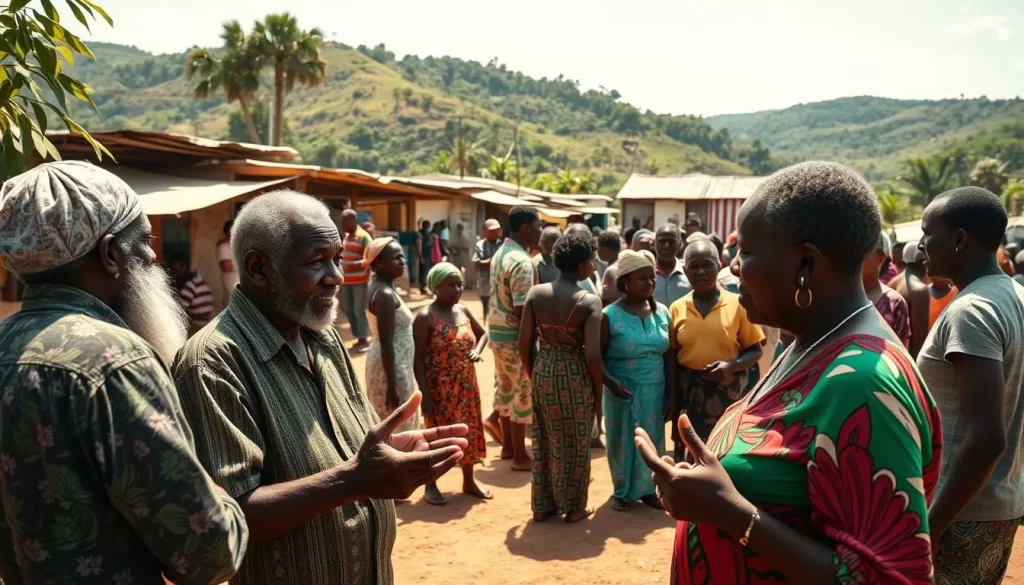
For a person liberia, language is more than just words. It’s a connection to heritage and identity. The dialects here vary widely, influenced by ethnic groups and neighboring regions like sierra leone.
Dialectal Nuances in Liberian English
Standard liberian English has unique features that set it apart. It blends archaic American expressions with British and local elements. This variety english is a testament to the region’s adaptability.
For example, certain pronunciations and phrases are distinct to the coastal region. These nuances make the language rich and diverse. Understanding these differences offers insight into the culture.
Influence of Regional and Ethnic Variations
Regional dialects are shaped by the people who speak them. In the west african context, ethnic groups like the Kru and Bassa have left their mark. Their languages influence the way English is spoken here.
Neighboring sierra leone also plays a role. The interaction between these regions has led to shared linguistic traits. This exchange enriches the variety english spoken in the area.
Legacy of Americo-Liberian Language Styles
The arrival of settlers from the united states brought new linguistic influences. Their language styles blended with local dialects, creating a unique form of communication. This legacy is still evident today.
For instance, certain phrases and expressions trace back to Americo-Liberian settlers. These elements add depth to the standard liberian dialect. They highlight the region’s historical ties to the united states.
| Dialect | Influence | Region |
|---|---|---|
| Standard Liberian English | American and British | Nationwide |
| Kru Pidgin English | Maritime communities | Coastal areas |
| Liberian Kreyol | West African Pidgin | Urban centers |
These dialects showcase the variety english spoken in the region. They reflect the rich cultural heritage and historical influences that shape communication here.
Cultural and Social Impact of Liberia’s Languages
Language plays a pivotal role in shaping personal and collective identity in this vibrant region. It’s not just a tool for communication but a reflection of heritage and belonging. For many, the way you speak connects you to your roots and community.

In coastal areas, life by the coast has historically influenced language development. The interaction between different groups has created unique dialects that reflect the region’s diversity. These linguistic variations are a testament to the adaptability of the people.
Language and Identity Formation
For a person, language is deeply tied to their sense of self. It’s how they express their culture and traditions. In many communities, the family plays a crucial role in passing down language customs, ensuring that heritage is preserved.
Indigenous languages, in particular, are a source of pride. They represent a connection to ancestors and a way of life that has endured for generations. This is especially true in rural areas, where traditional dialects are still widely spoken.
The Role of Language in Education and Community
Language also plays a key role in education. In schools, the majority of instruction is conducted in English, but indigenous languages are often used in informal settings. This dual approach helps bridge the gap between formal education and cultural identity.
Communities rely on language to foster cohesion and mutual understanding. Whether it’s through storytelling, ceremonies, or everyday conversations, language strengthens social bonds. For more insights into how language shapes culture, visit this detailed resource.
Understanding the cultural and social impact of languages offers a deeper appreciation of the region’s rich heritage. It highlights the importance of preserving linguistic diversity for future generations. To explore further, check out this comprehensive guide.
Conclusion
The rich linguistic diversity here reflects a blend of history, culture, and identity. The language spoken liberia unites communities, blending formal and informal forms seamlessly. For example, kru pidgin remains a vital part of everyday communication, especially in coastal areas.
You’ll find that english spoken liberia offers a fascinating mix of traditional and modern influences. This unique variant bridges gaps between formal settings and informal interactions. It’s a testament to the region’s adaptability and resilience.
The niger-congo language family plays a crucial role in defining this diversity. Indigenous tongues like Kpelle and Bassa add depth to the cultural tapestry, preserving ancient traditions. Efforts to document these languages ensure their survival for future generations.
Understanding this linguistic heritage offers insight into how culture and identity evolve. For more details on the region’s history, visit this comprehensive guide. It’s a reminder of the importance of preserving linguistic diversity in a rapidly changing world.
The above is subject to change.
Check back often to TRAVEL.COM for the latest travel tips and deals.

